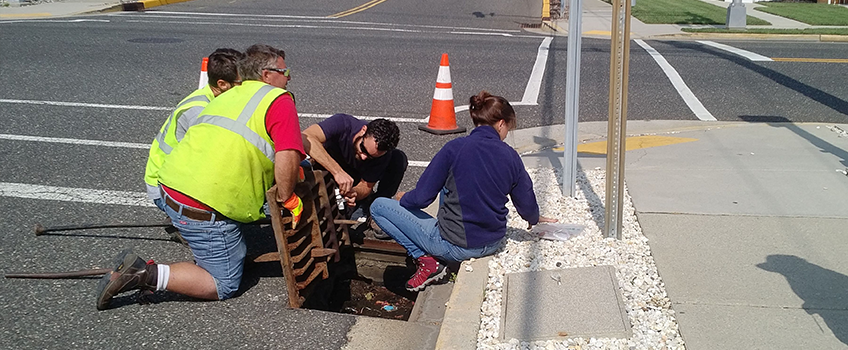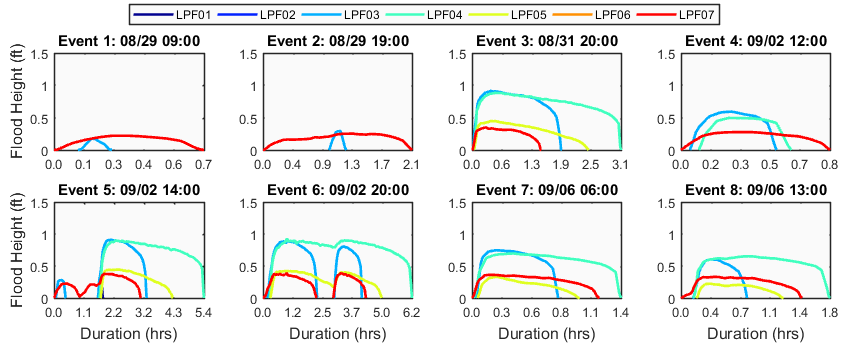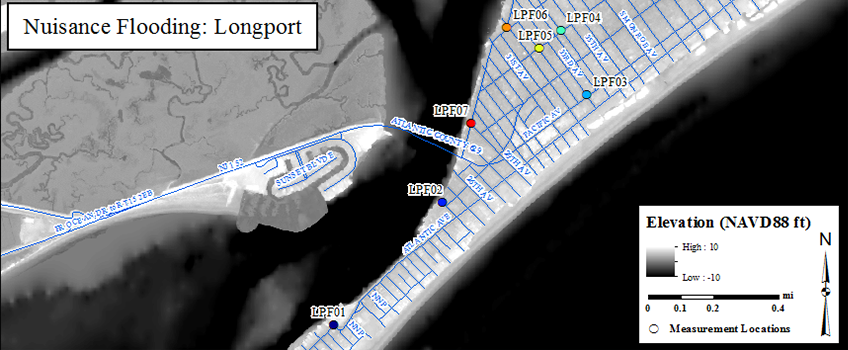Nuisance Flooding Studies

Nuisance Flooding Event

HOBO Sensor Installation

Measured Nuisance Flooding Events

Measured Nuisance Flooding Events Locations
The first studies to be funded are taking place in the borough of Avalon in Cape May County, NJ and in the borough of Longport in Atlantic County, NJ. The funding is being channeled through the Atlantic Cape New Jersey Coastal Coalition (ACNJCC) in cooperation with the respective towns. Fourteen total sites were selected in Avalon (with two of these sites measuring tidal fluctuations in the bay) and eight total sites were selected in Longport (with one of these sites measuring tidal fluctuations in the bay). Tidal fluctuations are measured so that researchers can isolate nuisance flooding caused by rain and nuisance flooding caused by increased tidal levels due to coastal storms. Instruments deployed to measure nuisance flooding in the streets were affixed to the underside of storm drains and instruments deployed to measure tidal fluctuations were affixed to bulkheads. Data will be collected over the course of an entire year and data analysis will be ongoing until the project is complete.


